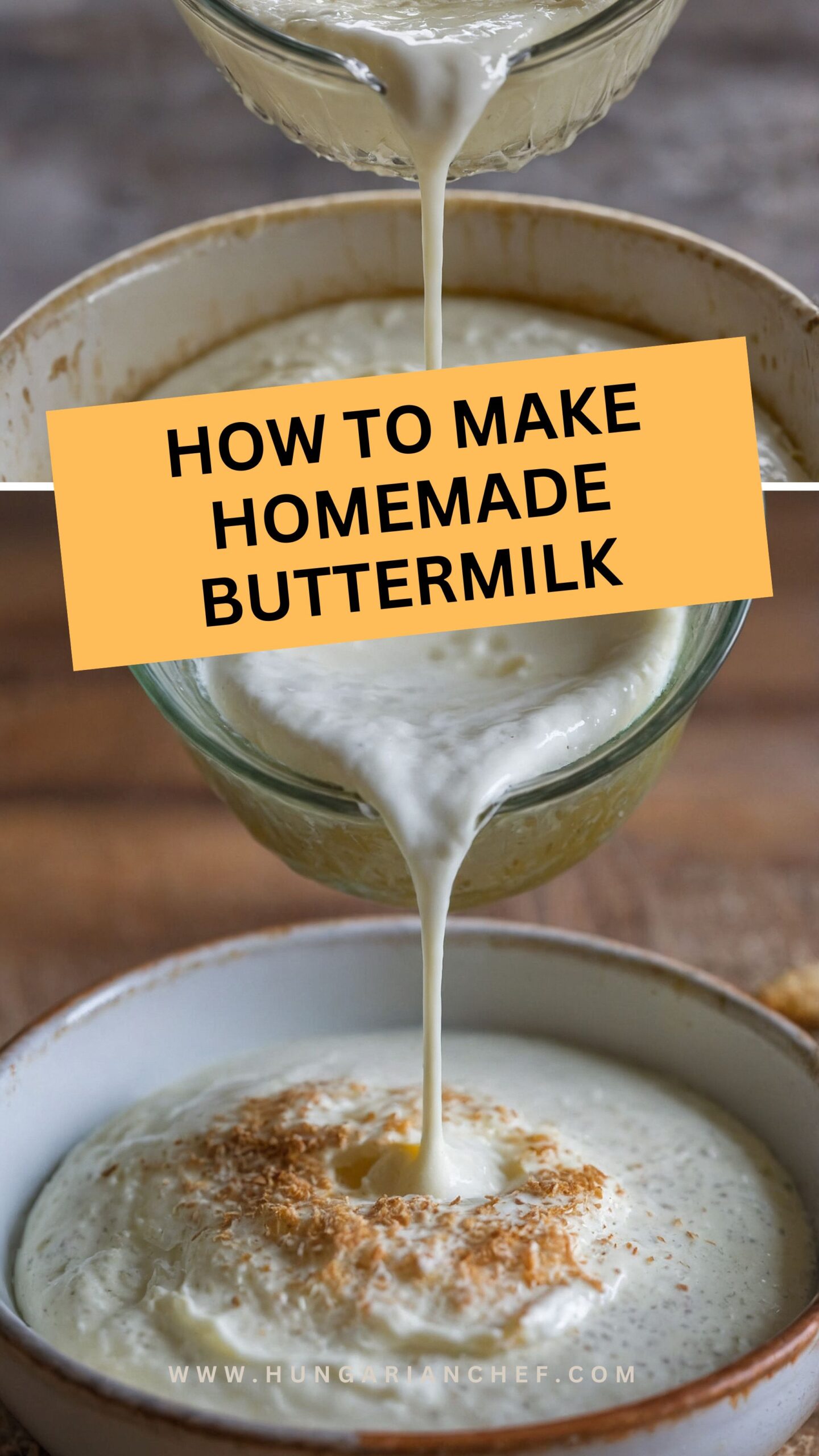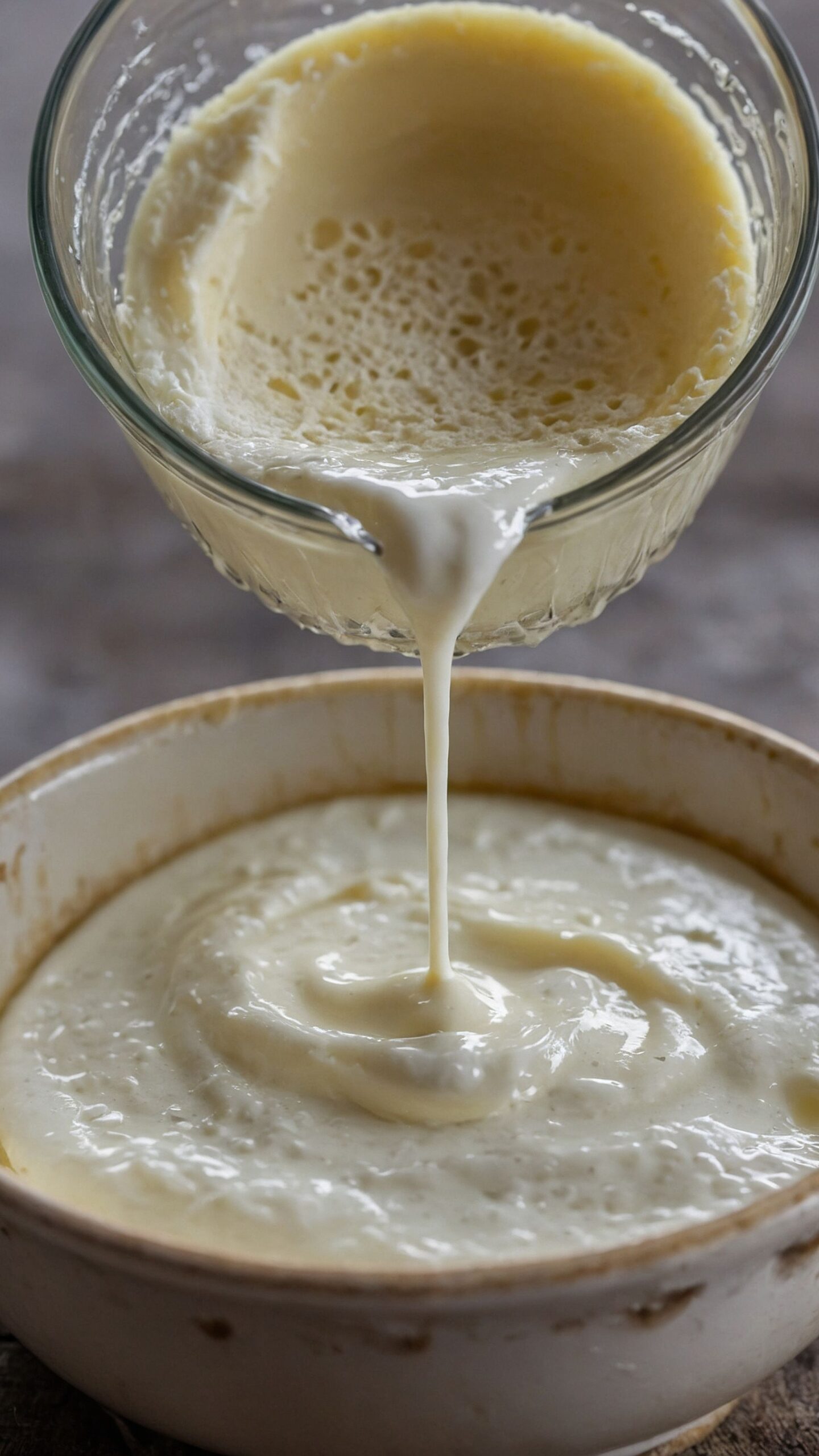Looking to jazz up your culinary creations? Whether you’re baking fluffy pancakes, whipping up decadent biscuits, or crafting an unbeatable cornbread, homemade buttermilk is your secret weapon.
This magical ingredient can transform ordinary dishes into extraordinary delights. You might be thinking, “What can I pair with buttermilk?” Well, let’s get into it!
Pairing Suggestions:
1. Pancakes: Light, fluffy, and oh-so-perfect with a drizzle of maple syrup.
2. Biscuits: Flaky and buttery, these bad boys benefit so much from buttermilk.
3. Cornbread: Sweet and savory, it’s the ideal sidekick for chili and barbecues.
4. Salad Dressings: Create a creamy dressing that elevates any garden salad.

When I first ventured into the world of homemade buttermilk, I didn’t expect my kitchen to become a flavor haven. As a food enthusiast and registered dietitian, I’ve always aimed to create dishes that delight the palate while nourishing the body. Buttermilk is more than just a cooking ingredient; it’s a game-changer. Hence, I can’t wait to share how to make this gem right in your kitchen!
So, what exactly is homemade buttermilk? It’s a tangy, thick liquid produced by fermenting milk, traditionally leftover from butter-making. In today’s kitchen, it’s crafted by souring fresh milk. Let’s explore why making your own buttermilk is a fantastic choice.
Why This Recipe Works
This homemade method stands out for several compelling reasons. Let’s dive into those!
1. Freshness You Can Taste
Using fresh ingredients means better flavor. When I make buttermilk at home, it’s always creamy and tangy, enhancing the dishes I prepare.
2. Control Over Ingredients
You know exactly what goes into your buttermilk. No extra preservatives or additives found in store-bought versions. It’s all-natural, delicious, and wholesome.
3. Quick and Simple
Creating buttermilk at home only takes about five minutes. Seriously! It’s a quick process that involves minimal effort.
4. Versatile Uses
Whether you’re making pancakes, dressing, or marinades, buttermilk is incredibly versatile. Each time I use it, I discover new flavor possibilities, consistently surprising my taste buds.
You will also like the following Drinks recipes!
- Copycat Bobby Flay Lemonade
- Chocolate Peanut Butter Banana Smoothie
- How to make The Best Homemade Pumpkin Spice Latte
Ingredients You’ll Need to Make Homemade Buttermilk
Creating homemade buttermilk doesn’t require any complicated ingredients. Here’s what you’ll need:
- 1 cup whole milk (240 ml): The base for our buttermilk.
- 1 tablespoon apple cider vinegar or lemon juice (15 ml): This is what adds that signature tang.
- 1 teaspoon pure vanilla extract (optional): For a hint of sweetness.
- 1/4 teaspoon ground cinnamon (optional): This can give an added warmth to certain recipes.

How to Make Homemade Buttermilk
Let’s break this down into easy-to-follow steps!
Step 1: Gather Your Ingredients
Start by collecting all the necessary ingredients. You want to ensure everything is fresh and ready to go.
Step 2: Measure the Milk
Pour just under 1 cup of whole milk into a measuring cup. Whole milk offers the richest flavor, but feel free to use low-fat if you prefer.
Step 3: Add Acid
Now, stir in your choice of acid. This is where the magic happens! Add either the apple cider vinegar or freshly squeezed lemon juice to the milk.
Step 4: Mix and Let Rest
Give it a gentle stir and let it sit for about 5-10 minutes. During this time, the milk will curdle slightly, thickening and taking on that tangy flavor.
Step 5: Use or Store
After your buttermilk has rested, you can use it right away in your recipes. If you’re not using it immediately, transfer it to a clean container with a lid and store it in the fridge.
Tips for Making the Best Buttermilk
- Use Whole Milk: For the richest flavor and texture, opt for whole milk.
- Don’t Rush It: Let the milk sit for at least 5 minutes to achieve the right consistency.
- Substituting Ingredients: If you prefer different acids, experiment with white vinegar or even yogurt.
- Storage: Keep your buttermilk in a sealed container. It can stay fresh in the fridge for up to two weeks.
- Shake Well: Before using buttermilk from the fridge, give it a good shake. Separation can happen, and we want the consistency just right!
Nutrition Information
How to Store Leftovers?
You can store any leftover buttermilk in a tightly sealed container in the refrigerator. It should stay fresh for about 1 to 2 weeks. Just remember: if it smells sour, it’s time to toss it.

Recommended Side Dishes for Homemade Buttermilk
1. Southern-Style Biscuits
Picture golden, flaky biscuits that melt in your mouth. Buttermilk adds richness and helps them rise. They pair beautifully with honey or jam.
2. Savory Cornbread
This is a staple at many gatherings. The tanginess of buttermilk enhances the sweetness of the corn, creating a well-balanced side.
3. Classic Creamy Coleslaw
Add buttermilk to your dressing for a luscious coleslaw that balances tang and crunch. It’s perfect for summer barbecues.
4. Pancakes and Waffles
Start your day with a breakfast of champions. Buttermilk pancakes are thick and fluffy, while waffles turn crispy on the outside, tender on the inside.
Substitute Options for Ingredients
Sometimes you may find yourself in a pinch. Here are some great substitutes if you don’t have everything on hand:
1. Milk and Vinegar
If you’re out of whole milk, you can mix low-fat milk with white vinegar. Use the same proportions as the recipe suggests.
2. Yogurt
Plain yogurt can be thinned out with a little water to create a similar consistency to buttermilk. One cup yogurt, thinned with a splash of water, works great.
3. Sour Cream
Like yogurt, sour cream can also substitute buttermilk when thinned down with water. Use the same amount you would for buttermilk.
4. Non-Dairy Options
If dairy’s not in the cards for you, use almond milk with a tablespoon of lime juice or vinegar. It’ll work just as well!

Equipment
- cups
- Tablespoons
Ingredients
- 1 cup whole milk 240 ml: The base for our buttermilk.
- 1 tablespoon apple cider vinegar or lemon juice 15 ml: This is what adds that signature tang.
- 1 teaspoon pure vanilla extract optional: For a hint of sweetness.
- 1/4 teaspoon ground cinnamon optional: This can give an added warmth to certain recipes.
Instructions
Step 1: Gather Your Ingredients
- Start by collecting all the necessary ingredients. You want to ensure everything is fresh and ready to go.
Step 2: Measure the Milk
- Pour just under 1 cup of whole milk into a measuring cup. Whole milk offers the richest flavor, but feel free to use low-fat if you prefer.
Step 3: Add Acid
- Now, stir in your choice of acid. This is where the magic happens! Add either the apple cider vinegar or freshly squeezed lemon juice to the milk.
Step 4: Mix and Let Rest
- Give it a gentle stir and let it sit for about 5-10 minutes. During this time, the milk will curdle slightly, thickening and taking on that tangy flavor.
Step 5: Use or Store
- After your buttermilk has rested, you can use it right away in your recipes. If you’re not using it immediately, transfer it to a clean container with a lid and store it in the fridge.
Notes
- Use Whole Milk: For the richest flavor and texture, opt for whole milk.
- Don’t Rush It: Let the milk sit for at least 5 minutes to achieve the right consistency.
- Substituting Ingredients: If you prefer different acids, experiment with white vinegar or even yogurt.
- Storage: Keep your buttermilk in a sealed container. It can stay fresh in the fridge for up to two weeks.
- Shake Well: Before using buttermilk from the fridge, give it a good shake. Separation can happen, and we want the consistency just right!
Nutrition
Frequently Asked Questions
1. Can I freeze buttermilk?
Yes! You can freeze buttermilk in ice cube trays for easy use later. Just thaw as needed and give it a good shake before use.
2. Can I use buttermilk in baking?
Absolutely! Buttermilk adds moisture and a lovely subtle tang, perfect for cakes, muffins, and pancakes.
3. Is buttermilk healthy?
Yes, buttermilk is low in fat and calories compared to regular milk. Plus, it contains probiotics which are beneficial for gut health.
4. What if my buttermilk doesn’t thicken?
If it doesn’t thicken much after sitting, it might be due to very fresh milk. Try using milk that’s been in the fridge for a few days.
5. Can I use buttermilk in savory dishes?
Definitely! Buttermilk can be used in marinades, salad dressings, and dips, enhancing flavor in savory dishes perfectly.
Conclusion
Making homemade buttermilk is straightforward and rewarding. It’s a skill that every home cook should have in their toolkit. The ability to whip it up quickly changes how you approach your cooking and baking.
So, the next time you’re craving the lightness of pancakes or the richness of biscuits, remember—you’ve got this delicious ingredient at your fingertips. With just a few staples from your pantry, you can add an incredible depth of flavor to your dishes, impressing friends and family alike. Enjoy the process, and happy cooking!
You’ll also like these latest recipes!

Rebecca Novak is a trained chef with over 10 years of experience in the food industry. She has worked in both fine dining and casual Hungarian restaurants and specializes in creating dishes using fresh, seasonal ingredients. She also loves exploring different cuisines worldwide, which allows her to bring unique flavors and ideas to the recipes she creates for Hungarianchef.com. Read more
